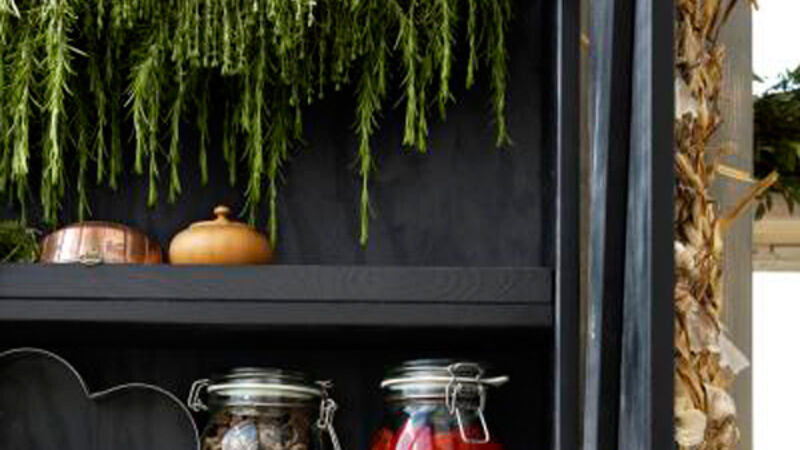5 tips on how to de-clutter a mess in your home

Terence Conran in his book, ‘Plain Simple Useful’ (Conran 2014) rails against ‘pointless complexity and superficial styling’.
Judith Wilson in her hymn of praise to communal happiness, Family Living (Ryland Peters & Small 2003), devotes much of her address to ‘free-flowing family living’ and guru of the great clutter-kill Marie Kondo, in The Life-Changing Magic of Tidying (Vermillion 2014) says “the question of what you want to own is actually the question of how you want to live your life”.

Designers, architects, life coaches and struggling homeowners — we all strain towards the same thing — open, organised, fresh, light-drenched, everyday spaces, pared back to genuinely valued things.
I like to describe this natural, maturing impulse as streamlining.
Here are a few tips and further reading to lighten a muddled, visual load.
All books can be ordered at your local library, bought in a bookshop, in eBook form, or online.
Life is all about making decisions and owning them. Take up any magazine image of a room, and in 90% of cases, the room on show is sparsely furnished — it answers immediate needs confidently and stops there.
Choose leading details you genuinely love and cast other, less dominant co-stars around them.
What makes something lead?
It could be a standalone colour, it could be a deliberately over-sized piece of furniture, it could be a mouth-watering section of architecture such as a superb fireplace and its recesses, or perhaps everything in the room should genuflect to that transcendent view.
Kelly Hoppen’s Design Masterclass is a wonderful read for the truly terrified about scale, proportion and furniture placement. Published by Jacqui Small at €52.
Marie Kondo made the fascinating remark that even nice storage furnishings are largely monuments to a lifestyle failure.
We are not using these hidden, disparate objects (most of which have lost all meaning to the moment we are in our lives now).
Still, we bind it up in cabinetry, formalise its stay, and dice up our square metres with dead-weight.

Yes, of course wardrobes, kitchen units, dressers and sideboards have their place, but don’t carry anything in the front door to ‘solve’ a storage problem until you have cleansed the house of everything you don’t need over the course of 12 months.
Then, and only then, add a contingency of 15% for over-spill.
Marie Kondo’s Spark Joy. One great clean could change your life — seriously! Vermillion. eBook, €10.99.
Without good lighting (a blend of natural and layered artificial, introduced light) any space becomes a forest of shadows, visual interruptions and delivers a deeply irritating environment.
Glare, where light is allowed to bully the room in pitches of centigrade and stark contrasting shadow, is equally awful.
By editing back to necessary, lovely furniture and accessories, more light can reach across the room through windows, open doors and bouncing off a glossy or pale floor.

Pieces have room to breathe, letting you see that shape that grabbed your heart on the showroom floor.
Foster the light on offer. If you have triple-glazed windows, lighten up on the heavy set dressing with blind and longer poles.
Don’t cut across a main window with anything higher than a hip-high sofa if possible. Raising seating and beds up on legs can have a magical influence on available natural light.
Declan O’Donnell’s Rooms. Improve what you have in that Irish home to make it worthy of next year’s ‘Home of the Year’. Hachette Books, €31.60.
Beyond the statement ‘it’s just, er — cool?’ have you have ever wondered why mid-century modern is so popular?
Innovative post-war design, long beloved of interiors designers and architects has seized us all by the wallets.
Aside from the incalculable prompts of sheer nostalgia, just look at those lines.
The universal truth of less is more, was never more true that for kick-out legs, strong but airy late 20th century materials, and the simple revelation of the frame of the chair.
Born of economy and generational rebellion, this is furniture that doesn’t get in the way of the place it inhabits.
There’s a lot to be excited about in new emerging design in the modern and efficient, out there on the high street and in our own Irish studios.
That Scandinavian restraint at IKEA, the light salmon lunch, that sleekly sketched colander, lights and loungers. We know it is in some metaphysical way ‘right’.
Design and Craft Council of Ireland website: www.dccoi.ie/consumers
Making, acquiring, collecting and ultimately letting go — this is the journey, folks — and a lean towards minimalism has proven itself for decades.
We may be getting over our fascination with recycling and even up-cycling. Still, there’s no better way to introduce individualised objects to your surroundings than the well chosen second-hand thing.
Overwhelmed by what you feel you cannot have? Market forces and branding snobbery can hypnotise.
If you really must have that cabochon-gorgeous Nelson Tischuhr Night Clock (€340), weighh your means, don’t apologise, and revel in the knowledge that, well-cared for, it will probably appreciate over time.
Buying the showroom room-set from a high-end store — how spirit-sucking would that actually be? Inform your individual eye and distil that essential personal style back to your house.
Erin Boyle’s Simple Matters. Living with less and ending up with more. Harry N Abrams, €13.76 eBook.







